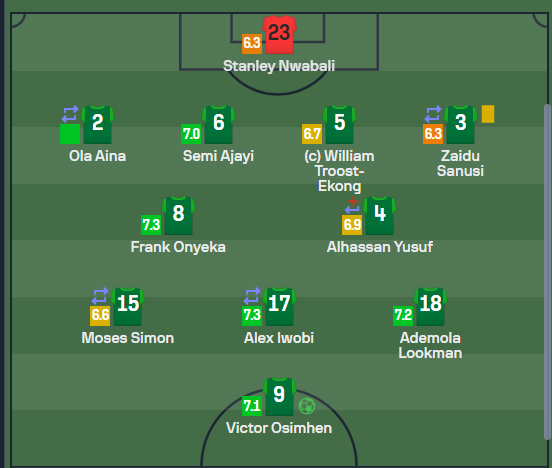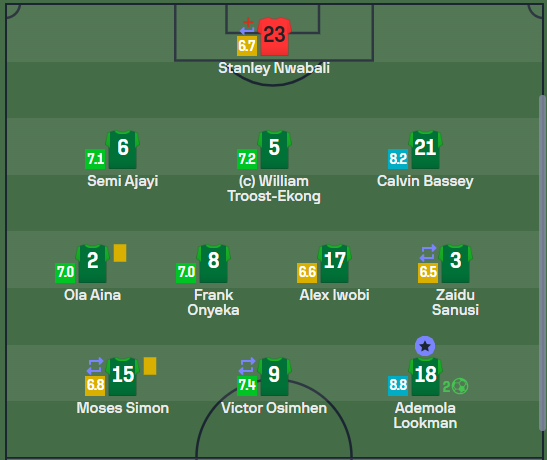Since 2022, the Super Eagles of Nigeria have experimented with various tactical setups, but the 3-4-3 formation has arguably delivered the most consistent results, Soccernet.ng reports.
When José Peseiro took over as head coach in 2022, the Nigerian national team tested different formations and playing styles under his guidance.
One notable experiment was during the 2023 Africa Cup of Nations qualifiers against Guinea-Bissau, where Peseiro paired Victor Osimhen with Kelechi Iheanacho and Paul Onuachu in attack. Unfortunately, the partnership failed to deliver, leading to an underwhelming performance for the Super Eagles.
Peseiro, known for his preference for using two strikers, struggled to make the tactic work for Nigeria. In their opening game of the 2023 AFCON against Equatorial Guinea, Nigeria settled for a 1-1 draw, revealing vulnerabilities in defence and a lack of attacking precision.

This result prompted a tactical shift to the 3-4-3 and 3-5-2 systems, which brought much-needed balance to the team.

The shift in formation solidified Nigeria’s defensive structure and enhanced their attacking potency, ultimately propelling the Super Eagles to the final of the tournament.
With the 3-4-3 system, Nigeria looked more composed at the back while posing a consistent threat going forward.
However, after Finidi George took over from Peseiro, he reverted to the 4-3-3 formation. Nigeria struggled under this setup, narrowly securing a 2-1 win against Ghana, before suffering a defeat to Mali, drawing with South Africa, and losing to Benin Republic.
In contrast, the return to the 3-4-3 formation under interim coach Augustine Eguavoen proved successful once again. In their recent AFCON qualifier against Benin Republic, the Super Eagles produced a dominant display with a 3-0 victory at the Godswill Akpabio Stadium, which depicts the system’s effectiveness.
This tactical approach, combining defensive solidity with attacking flair, remains Nigeria’s most successful formation in recent times.
